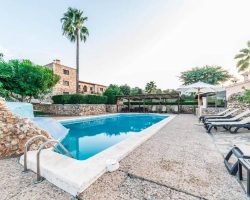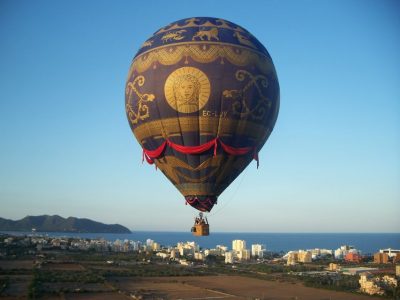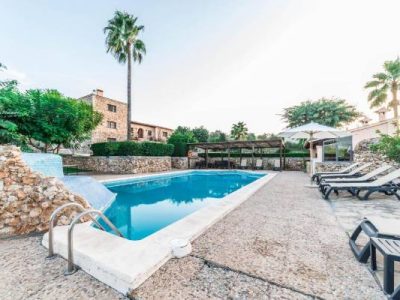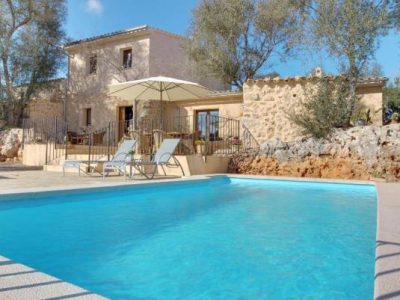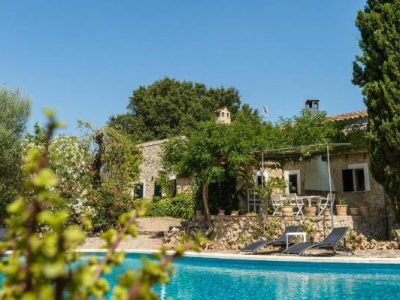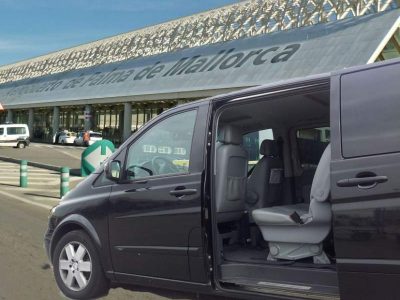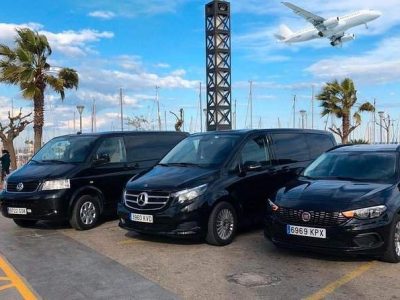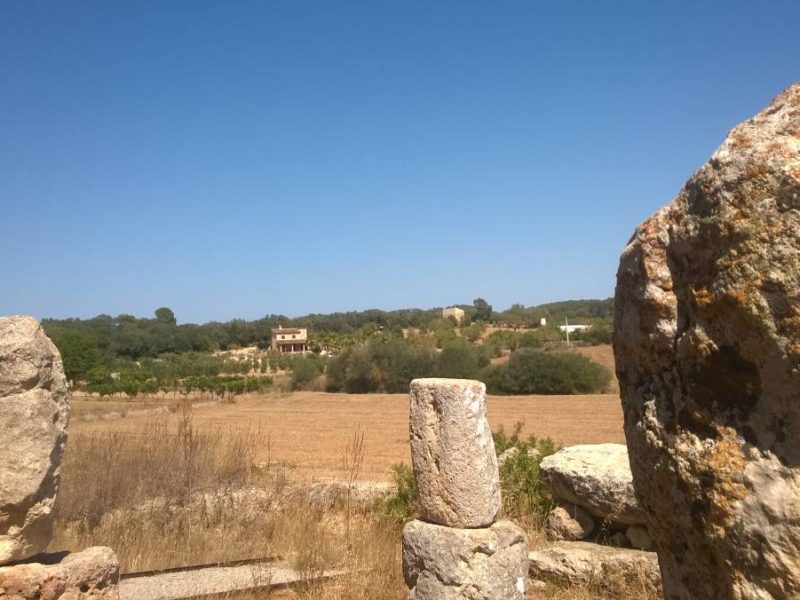
Why visit Costitx
Things to do in Costitx
VISIT THE ONE AND ONLY MALLORCA PLANETARIUM
Mallorca Planetarium and astrology observatory is situated just outside the village itself, at the highest point of the area. The planetarium is an interesting and very different attraction in Mallorca and especially in the agricultural region of Pla. At the planetarium, you can learn about our fascinating solar system through guided tours and interactive multimedia presentations. This is a great and interesting attraction.
DISCOVER THE SON CORRÓ PREHISTORIC TEMPLE
Now this is one of the most interesting places of interest in Costitx and the surrounding area. The reason why the prehistoric temple of Son Corró is unique, is because 3 bullheads made in bronze was found here by a local peasant. Back in ancient times, the bull was a religious animal that represented fertility and power, and was highly worshiped in tribes all over the Mediterranean region. These bullheads are now exhibited in the national museum of Spain in Madrid, which means they are truly a national treasure. You can enter the site for free just outside the village, it is not big but indeed fascinating.
THE PARISH CHURCH OF OUR LADY OF BIRTH
The parish church of Costitx can be admired from the outside as well as from the inside.As in many other small villages on the island, the church stands out among all other buildings in Costitx with its massive dimensions rising bell tower. Behind the church, you will find the rectory building featuring a nice collection of baroque paintings of the Virgin Mary.
CAPELLA DE LA MARE DE LA DEU
At a glance, this small chapel might not look as much, but it is truly a symbol and an important part of the local heritage of Costitx. Inside the little chapel, you can see a statue of Mary. Legend has it, that this particular statue was found in the late 1300’s by a group of choir boys, and was immediately framed in the chapel which became the first place of worshiping and religious ceremonies in the area post the Catalan conquest.
CASA ARNAU DE SANTACILLA
This building is unique in local eyes, because this was originally the first ever farm building in Costitx, and therefore has great cultural value to the locals. The name of the house, was given after local rector of same name lived here in during the late 1700’s. Arnau de Santacília, was the rector credited for the construction of the parish church and therefore a protagonist in the local story books.
FAQ
You’ll find a wide range of fincas and rental villas in Costitx for quiet and private accommodation. If you would like a farm stay, you should go for the agroturismo here.
Here are the best accommodation options in Costitx:
Costitx is located in the heart of the island, some 35 km (~22 miles) from Palma airport. The transfer time by car or taxi is about 30 minutes.
A taxi from the airport will cost about 40-45 euros.
If you prefer a more comfortable transfer, consider an air-conditioned private minibus. Book here
The weekly market in Costitx is held every Saturday morning, starting around 8 am.
Market and Events in Costitx
Weekly market in Costitx
The weekly farmers and crafts market in Costitx is held on Saturdays at the Plaça del Jardí (church square). At the market you can browse the many stands selling fresh local produce such as colorful vegetables and fruits, nuts, meats and cheeses. There is also a selection of flowers, crafts, Mallorcan ceramics, shoes and leather goods. The market is a great opportunity to indulge in one of the most retained Spanish traditions, while at the same time enjoying a delightful atmosphere as these markets always boasts.
Annual events and happenings
January
Festes de Sant Antoni
Sant Antoni is celebrated in most Mallorcan villages on January 16th. Sant Antoni is protector of animals and everything related to, which is why he is particularly worshiped in the more agricultural areas of the island. In the evening time, you can see the many bonfires in the village and enjoy the blessings.
Festes de Sant Sebastiàn
On January 20, Sant Sebastiàn is celebrated in the village. This happens with cosy bonfires and musical performances of classical and tradition Mallorcan.
May
Fira Costitx en flor
If you have interest in gardening, flowers, cultivation etc., then the annual flower fair in Costitx is a must. At the flower fair, you can discover exciting exhibitions, demonstrations, tools and a market. This is a great opportunity to purchase seeds and learn how to make your garden at home more Mediterranean.
September
Festes de la Mare de Déu de Costitx
The annual village celebration happens the first fortnight of September. The entire village is decorated in ribbons and various activities are carried out for children and adults. There will be sports, exhibitions, competitions, music, dancing and the traditional correfocs (fire runs) in the streets. This is a fun festivity for locals as well as tourists.
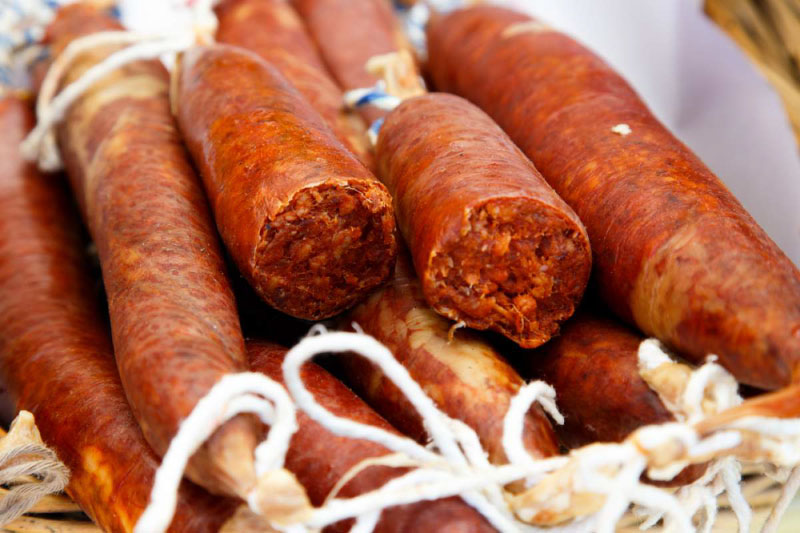
Support Local
Supporting local communities during your travels can have a profound impact. Stock up with groceries locally, stop in an artisan shop or enjoy a refreshment at a restaurant or bar. Now more than ever, these small businesses need support from travelers near and far.
Get to know the area of Costitx
About Costitx
Costitx is one of the smaller municipalities of Mallorca, covering a surface of just 1,535 hectares of land. The population comprises about 1,300 inhabitants.
History of Costitx
The vestiges of human occupation in the area dates back from prehistoric times. Actually, Costitx is one of the areas in Mallorca with most archaeological sites per square kilometer. Most of these sites are scattered over the countryside surrounding the village, many of them on private ground. There is, however, one of them that stands out significantly, and is on public ground, the Santuari de Son Corró. This prehistoric temple was discovered by a farmer, who found it in the woods along with three bull heads of bronze. All of the archaeological excavation works done in the area has taught us a lot about the life on the island more than 4,000 years ago.
There is not much evidence of Roman occupation in this area, however, we know that the Romans cultivated cereals and vineyards, and that there is a chance that they have been here due to the soil.
What we know for sure, is that Costitx was inhabited during the Islamic dominance (902-1229/32). The area was part of a district known as “Juz’ de Quanarussa”, which also included Santa Eugènia, Santa Maria del Cami, Sencelles, Consell, Binissalem and Alaró. It was the Berber tribe known as “Zanata” that ruled this area. The Arabs were excellent farmers, and introduced advanced watering systems such as qanats, wells and water tanks, allowing them to cultivate the lands and keep livestock.
Post the Catalan conquest of Mallorca (1229-1232), the king distributed the lands of the island amongst participators and supporters of the campaign. The district of Quanarussa was given to the viscount of Bearn and renamed to “Canarrossa”. At that time, there was no village, just a farmhouse. This farmhouse was rented to Arnau de Santacilla, a priest from Catalonia, who was put in charge of constructing a chapel to mark the Christian dominance. This chapel was built between 1236 and 1238, and was the first in the area.
However, the ecclesiastical superiority fell in the hands of the neighboring area Sencelles, that was given the power to function as a parish.
During the 15th and 16th century, Mallorca faced two major conflicts, the “Revolta Forana” (Revolt of the Foreigners) and the rise of the “Germanies”. The Revolta Forana was a conflict that arose because of bad economy and high taxes put on small landowners and day workers (foreigners). The peasants felt neglected and without influence from the horsemen and nobles who owned the majority of the lands, and therefore wanted better conditions. They were met with disapproval and resistance, and then the conflict escalated and turned violent. The conflict ended in 1453 with a loss to the peasants.
70 years after the outburst of the first conflict, in 1520, the conflict arose once again. This time it was initiated by the artisans guilds instead of farmers, and was far more organized and the movement known as the “Germanies” had support from peasants from all of Mallorca including Costitx. Thousands of lives were lost in brutal battles all over the Mallorcan countryside between 1520 and 1522. The resistance was so powerful that the king of Aragón had to take action and send the royal army to Mallorca to end it all. Several thousand trained soldiers arrived in Port de Pollenca in November 1522, and a final battle was fought in the marshes of Sa Pobla.
Costitx was fortunate enough to not suffer much repercussions from the conflicts, however, we know that Sencelles was fined for damages caused.
In the 17th century, there was a constant tension between Costitx and Sencelles because of the parish. The growing congregation of Costitx wanted their own independent parish, they were tired of walking to Sencelles for religious services. Finally, in 1695 an ecclesiastical court voted in favor of Costitx becoming an independent parish, and the construction of a new church could begin. At that time the village has 121 houses.
During the 18th and 19 century, there was a great deal of turbulence in Spain which affected all areas. In 1715, the Spanish War of Succession lead to a centralized societal system in Spain giving very little or none influence to local areas. In 1812, the Constitution of Cadiz, or Spanish Constitution, led to the introduction of independent municipalities, which gave Costitx its first time as an independent municipality. Unfortunately, just two years later it was taken from them again.
Following the governmental changes of Trienio Liberal in 1820, Costitx once again became an independent municipality with its first mayor, Antoni Vallespir-Dalmau,
Already in 1823, Costitx had to say goodbye to its independence due to the rule of Ferdinand VII. In 1845, a petition was made to allow for Costitx to be independent from Sencelles, and finally on February the 4th, 1858, Queen Isabel II granted Costitx its long wanted independence.
The local political scene started to take form with different unions and parties appealing to the community of Costitx. However, following the Spanish Civil War, Franco did not allow any political parties or unions anywhere in Spain, thus we have to fast forward to 1979 to find the next democratically elected mayor of Costitx, Maria Antònia Munar Riutort.
As for income, Costitx has been depending on its agriculture for centuries. The dry and plain landscapes has been used for cultivating figs, cereals, carobs and almonds.
In the more recent years, Costitx has developed significantly in terms of infrastructure and leisure activities. It has been a declared goal of the town hall to make the area more appealing to tourists and settlers by improving the road network and installing facilities for sports and activities.
Practical Info
Useful Numbers
Emergency: 112
National police: 091
Local police: 092
Guarda civil: 062
Fire: 080
Maritime emergencies: 900 202 202
Town Hall: +34 971 876 068
Public Transport
Bus lines: 304
Power Supply
220V



